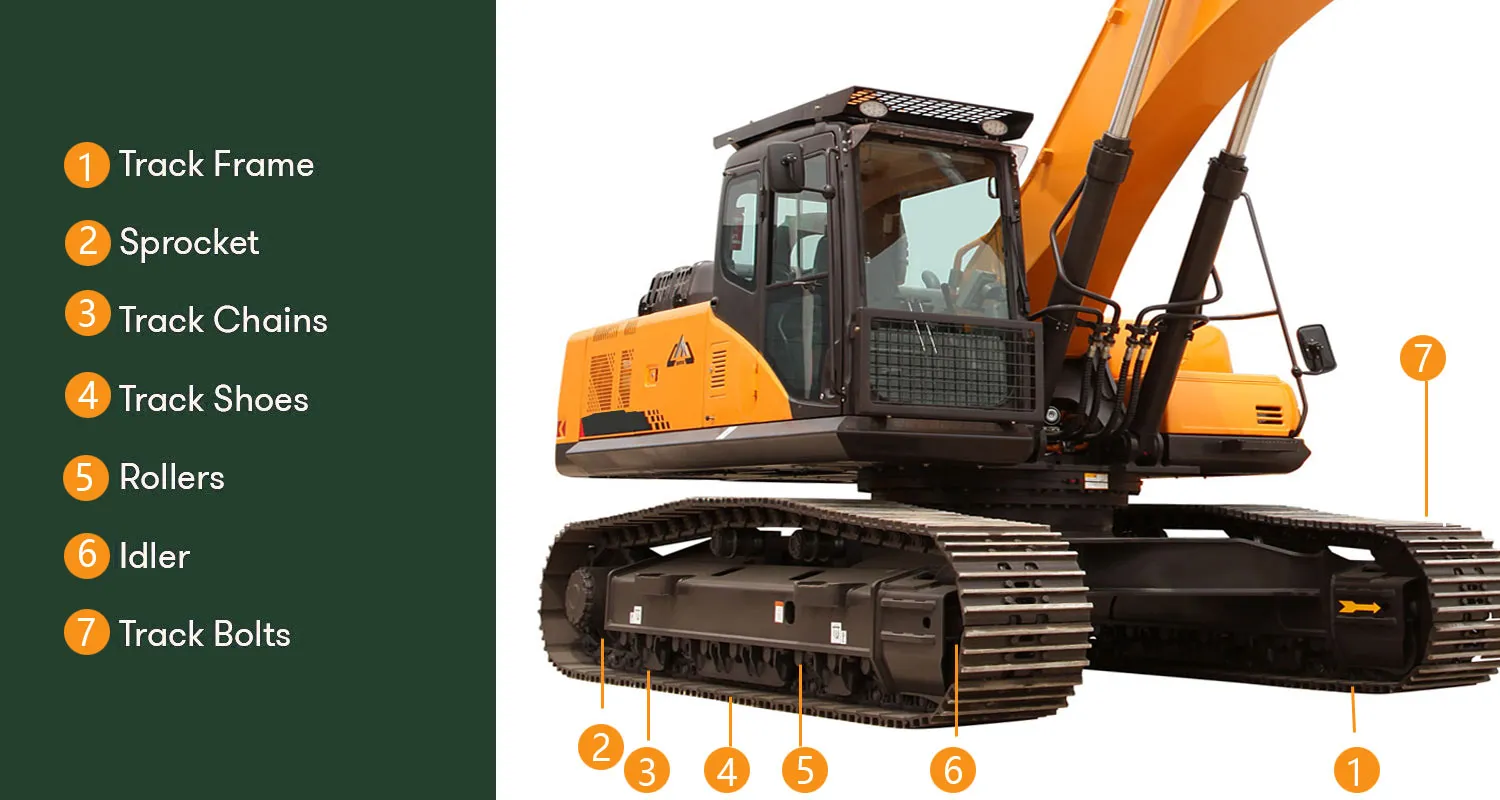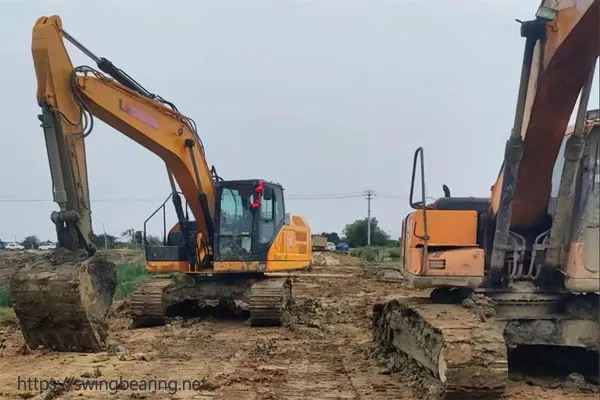
When it comes to excavators, understanding the different components and their functions can help you make informed decisions about maintenance and operation. One of the most important sections of an excavator is the house, which sits above the undercarriage. The house is composed of several key parts: the operator’s cab, the counterweight, the engine, and the fluid tanks. Let’s dive deeper into each of these crucial house parts.
The operator’s cab is essentially the heart of the excavator. It’s where the driver sits to control and operate the machine. Typically, the cab is designed with glazing all around it to provide maximum visibility. This is crucial for safety and efficiency, allowing the operator to have a clear view of the surroundings and the task at hand.
The operator’s cab is more than just a seat and controls; it’s a well-engineered space designed to provide the operator with all the tools needed for precise and safe operation. The glazing, often made from toughened glass or polycarbonate, ensures that the operator can see all around the machine, which is essential for navigating tricky job sites and avoiding obstacles. This visibility is especially important during complex maneuvers or when working in tight spaces where precision is key.
The glazing around the cab ensures that the operator has an unobstructed view, which is essential for performing tasks accurately and safely. This feature helps in avoiding obstacles and enhances the precision of operations.
Moreover, the cab is usually equipped with additional safety features such as windshield wipers for clear visibility in adverse weather conditions, and sometimes even cameras that provide a 360-degree view, further enhancing the operator’s ability to monitor the surroundings.
In addition to visibility, the cab’s sturdy roof offers protection from the elements, such as rain and sun. It is also designed to shield the operator from any materials that may accidentally fall from the boom’s attachment. Comfort is also a priority in the design of the operator’s cab. Modern cabs often come equipped with ergonomic seats, climate control, and advanced control panels to make operation as smooth and comfortable as possible.
Comfort is crucial because operators often spend long hours in the cab. Ergonomic seats reduce fatigue, while climate control systems ensure that the operator can work in comfort regardless of the weather outside. Advanced control panels with intuitive layouts allow operators to manage the excavator’s functions with ease, increasing both efficiency and safety.

The counterweight is a fundamental design element in every excavator. Its main function is to balance the machine, especially when the boom is fully extended. Without the counterweight, the weight of the boom could tip the entire machine forward, posing a significant risk.
Older models of excavators had counterweights that extended past the back of the tracks, which could be cumbersome and limit maneuverability. However, modern designs feature more compact counterweights that do not stick out as much. This improvement has significantly enhanced the maneuverability of excavators, allowing them to operate more efficiently even in tight spaces.
The evolution of counterweight design is a testament to the advancements in engineering and materials science. Modern counterweights are often made from high-density materials that provide the necessary balance without adding excessive bulk. This allows for a more streamlined design, reducing the overall footprint of the excavator and improving its agility.
The engine is the powerhouse behind the entire excavator. It drives the machine forward and ensures that all the المضخات الهيدروليكية installed on the excavator can function properly. Typically, excavators are equipped with diesel engines to produce maximum power and efficiency.
The engine is the powerhouse behind the entire excavator. It drives the machine forward and ensures that all the hydraulic pumps installed on the excavator can function properly. Typically, excavators are equipped with diesel engines to produce maximum power and efficiency. These engines are designed to handle the rigorous demands of construction and excavation tasks, providing the necessary torque and horsepower to operate the machine effectively.
The engine not only powers the movement of the excavator but also supports other vital functions, such as the operation of the hydraulic system. The reliability and performance of the engine are crucial for the overall efficiency of the excavator.
The engine’s role extends beyond simple propulsion. It powers the hydraulic system, which is responsible for the movement of the boom, arm, and other attachments. This hydraulic power is what enables the excavator to perform tasks such as digging, lifting, and moving heavy materials with ease. The engine converts fuel into mechanical energy, which is then used to drive the المضخات الهيدروليكية. These pumps generate the hydraulic pressure needed to operate the various components of the excavator, making it a versatile and powerful machine.
In addition to the primary functions, the engine also supports auxiliary functions such as powering the electrical system, including lights, sensors, and control panels. This ensures that the operator has all the necessary tools and information to operate the machine safely and efficiently. The engine’s ability to support multiple functions simultaneously is a testament to its robustness and versatility.
Regular maintenance and timely servicing can help keep the engine in top condition, ensuring that the machine runs smoothly. This includes checking oil levels, filters, and other essential components to prevent any operational hiccups.
Maintaining the engine is not just about keeping it running; it’s about ensuring that it operates at peak efficiency. Regular oil changes, filter replacements, and inspections can prevent small issues from becoming major problems. This proactive approach to maintenance can extend the life of the engine and reduce downtime, which is crucial for keeping projects on schedule. Routine checks also include inspecting the cooling system, fuel system, and exhaust system to ensure that they are functioning properly.
Modern excavators often come equipped with advanced diagnostic systems that can monitor the engine’s performance in real-time. These systems can alert the operator to potential issues before they become serious problems, allowing for timely intervention and repair. This level of monitoring helps maintain the engine’s reliability and enhances the overall efficiency of the machine.
With growing concerns about environmental impact and fuel costs, modern diesel engines are designed to be more fuel-efficient and produce fewer emissions.
Fuel efficiency is a critical factor in the overall cost of operating an excavator. Engines that are designed to maximize fuel efficiency can significantly reduce operational costs. This is achieved through advanced fuel injection systems, turbocharging, and other technologies that optimize the combustion process. Efficient engines not only save money but also ensure that the machine can operate for longer periods without needing to refuel, thus increasing productivity.
Environmental regulations have led to the development of engines that produce lower emissions. Features such as exhaust gas recirculation (EGR), selective catalytic reduction (SCR), and diesel particulate filters (DPF) help reduce the pollutants emitted by the engine. These technologies ensure that the excavator complies with environmental standards while maintaining high performance.
As technology advances, so do the engines that power excavators. Innovations in engine design and materials are continually improving the performance, efficiency, and durability of these powerhouses.
Hybrid and electric engines are becoming more common in the construction industry. These engines offer the potential for even greater fuel efficiency and lower emissions. Hybrid systems can combine the power of a traditional diesel engine with electric motors, providing a boost in performance while reducing fuel consumption. Fully electric engines, while still in the early stages of adoption, promise a future where construction equipment can operate with zero emissions.
Smart engine management systems use advanced algorithms and sensors to optimize engine performance. These systems can adjust fuel injection, throttle response, and other parameters in real-time to ensure the engine operates at its best under varying conditions. This not only enhances performance but also extends the life of the engine by reducing wear and tear.
The engine is undeniably the powerhouse of the excavator, driving not only its movement but also its many auxiliary functions. From powering the hydraulic system to supporting the electrical components, the engine is central to the machine’s operation. Regular maintenance, fuel efficiency, and innovations in technology all contribute to the engine’s reliability and performance.
By understanding the critical role of the engine and committing to its upkeep, operators can ensure that their excavators remain efficient, powerful, and ready to tackle any task. Whether through routine maintenance or embracing new technologies, taking care of the engine is essential for the longevity and effectiveness of the excavator.
The fluid tanks are another vital component of the house. These tanks store the fuel and hydraulic fluid required for the excavator’s operation. Usually located in the rear housing that encloses the engine, the fluid tanks ensure that the excavator has a steady supply of essential fluids.
The fuel tank holds the diesel required to power the engine. Ensuring that the fuel tank is regularly refilled and checked for any leaks is essential for uninterrupted operation.
The fuel tank is designed to hold enough diesel to allow the excavator to work for extended periods without needing to refuel. This is important for maintaining productivity, as frequent refueling can cause delays. Additionally, the fuel tank is often equipped with filters and sensors to ensure that the fuel supply is clean and free of contaminants.
The hydraulic fluid tank stores the hydraulic fluid needed for the hydraulic pumps. Regular checks and maintenance of the fluid levels are essential to ensure the smooth operation of the excavator. Running out of fuel or hydraulic fluid can lead to operational downtime and potential damage to the machine.
The hydraulic fluid is the lifeblood of the excavator’s hydraulic system. It transfers power from the engine to the hydraulic pumps, enabling the movement of the boom, arm, and other attachments. Keeping the hydraulic fluid clean and at the proper level is crucial for maintaining the efficiency and reliability of the hydraulic system.
Understanding the various house parts of an excavator, including the operator’s cab, the counterweight, the engine, and the fluid tanks, is essential for effective operation and maintenance. Each component plays a crucial role in the overall functionality and performance of the machine. By paying attention to these key parts and ensuring regular maintenance, you can keep your excavator in top working condition and maximize its efficiency on the job site.
Whether you are an operator or a manager responsible for a fleet of excavators, having a good grasp of these components can help you make informed decisions and ensure the longevity and reliability of your equipment.
By focusing on the intricate details of each house part, you can better understand how to optimize your excavator’s performance. Regular maintenance, timely checks, and understanding the role of each component will not only enhance the machine’s efficiency but also extend its operational life. So, the next time you see an excavator at work, you’ll have a deeper appreciation of the complex engineering that goes into making it such a powerful and versatile machine.